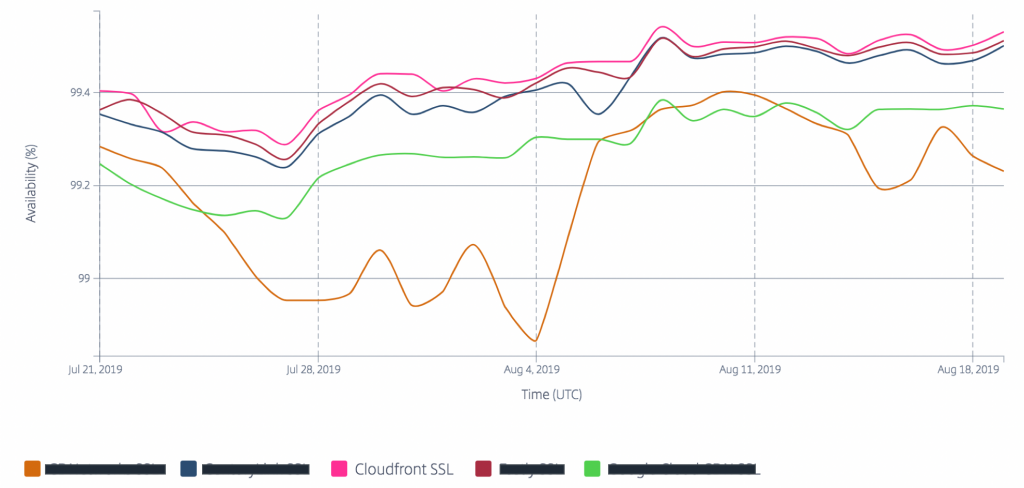Networking & Content Delivery
Accelerating WordPress with CloudFront using the AWS for WordPress Plugin
AWS for WordPress WordPress is a technological marvel in the number of internet sites it powers and the momentum with which developers actively contribute to the community. Recent estimates put WordPress at powering more than 34% of internet sites, and more than 50,000 plugins are available through WordPress.org covering everything from security enhancements to SEO […]
Creating a single internet exit point from multiple VPCs Using AWS Transit Gateway
In this post, we show you how to centralize outbound internet traffic from many VPCs without compromising VPC isolation. Using AWS Transit Gateway, you can configure a single VPC with multiple NAT gateways to consolidate outbound traffic for numerous VPCs. At the same time, you can use multiple route tables within the transit gateway to […]
Performing Route 53 health checks on private resources in a VPC with AWS Lambda and Amazon CloudWatch
If you have ever used Amazon Route 53 health checks to monitor resources, you know that monitored resources must have public IP addresses. This is because Route 53 health checkers are public and they can only monitor hosts with IP addresses that are publicly routable on the internet. You may want to monitor your resources […]
Using multiple content delivery networks for video streaming – part 1
Introduction Today, viewing video content is a prevalent form of online activity whether in entertainment, education, marketing, or information. For example, as a Solutions Architect at AWS, I tend to watch hours of video a week to learn about technologies, and I also leverage video content to convey ideas and best practices in a scalable […]
Generating dynamic error responses in Amazon CloudFront with Lambda@Edge
Amazon CloudFront allows you to create custom error pages for specific HTTP status codes and to change response codes. CloudFront also offers origin failover capability, with which you can easily set up failover logic between combinations of AWS origins or non-AWS custom HTTP origins. This creates minimal interruption in your viewer’s experience. However, while these […]
Analyzing and visualizing AWS Global Accelerator flow logs using Amazon Athena and Amazon QuickSight
AWS Global Accelerator simplifies multi-region cloud deployments while leveraging the AWS vast, highly available, and congestion-free global network. Global Accelerator uses a pair of static anycast IP addresses to direct you to the application that is geographically closest and has healthy endpoints, using routing policies that you configure. This feature makes sure that you have […]
Authorization@Edge using cookies: Protect your Amazon CloudFront content from being downloaded by unauthenticated users
Enterprise customers who host private web apps on Amazon CloudFront may struggle with a challenge: how to prevent unauthenticated users from downloading the web app’s source code (for example, React, Angular, or Vue). In a separate blog post, you can learn one way to provide that security using Amazon Lambda@Edge and Amazon Cognito, with an example […]
Integrating AWS Transit Gateway with AWS PrivateLink and Amazon Route 53 Resolver
I want to take some time to dive more deeply into a use case outlined in NET301 Best Practices for AWS PrivateLink. The use case involves using AWS Transit Gateway, along with Amazon Route 53 Resolver, to share AWS PrivateLink interface endpoints between multiple connected Amazon virtual private clouds (VPCs) and an on-premises environment. We’ve seen […]
How Flowplayer Improved Live Video Ingest With AWS Global Accelerator
Flowplayer is an online video platform designed for publishers and the media industry. Founded in 2007, their platform fast became known for being a powerful yet lightweight solution. Rather than concentrating on just a single subset of the market, they have designed their solution to suit small, specialized businesses all the way up to global-scale […]
TCP BBR Congestion Control with Amazon CloudFront
One of the fundamental value propositions of a content delivery network (CDN) is performance. Two of the key aspects of great performance are latency and throughput: that is, delivering a large volume of bits quickly and consistently. These attributes play a critical role in content delivery of all kinds, from video streams to API calls. […]






